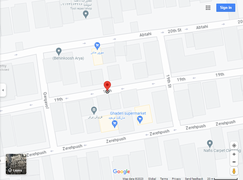GMP-Compliant Mesenchymal Stem Cell-Derived Exosomes for Cell-Free Therapy in Cancer
GMP-Compliant Mesenchymal Stem Cell-Derived Exosomes for Cell-Free Therapy in Cancer
Cancer is categorized as one of the life-threatening disease in the world, which has recently been associated with a significant increase in the incidence and prevalence rate. Hence, the discovery of effective approaches for prevention, early diagnosis, and effective treatment for cancer has been prioritized by oncology researchers. In recent decades, mesenchymal stem cells show great potential to advance the field of regenerative medicine and oncology research due to representing prominent characteristics. Recently, studies indicate that mesenchymal stem cells can play an important role by secreting extracellular vesicles like exosomes in modulating the biological functions of target cells through paracrine regulation.
Stem Cell-Based Modeling Protocol for Parkinson's Disease
Stem Cell-Based Modeling Protocol for Parkinson's Disease
parkinson's disease is a progressive neurodegenerative disorder, which is mainly characterized by unintended or uncontrollable body movements. Pathophysiologically, disturbances in the neurotransmission system of the brain like dopaminergic system and synaptic dysfunction are classified as top-rated causes of the onset of Parkinson's disease, which symptoms can be different according to the involvement of neurotransmission system type and the effect of the disease on the motor and non-motor systems
Application of Biocompatible Scaffolds in Stem-Cell-Based Dental Tissue Engineering
Application of Biocompatible Scaffolds in Stem-Cell-Based Dental Tissue Engineering
However, the main focus of literature in the field of dental tissue engineering is on utilizing MSCs. On the other hand, biocompatible scaffolds play a notable role in this regenerative process which is mentioned to be harmless with acceptable osteoinductivity. Also, strategies of tissue bioengineering and experimental models are introduced in order to provide a perspective of the potential roles of dental tissue engineering to be used for clinical aims.
Critical roles of cytokine storm and bacterial infection in patients with COVID-19
Critical roles of cytokine storm and bacterial infection in patients with COVID-19
This virus can affect all systems of the body and its symptoms vary from a simple upper respiratory infection to fatal complications including end-organ damage. Secondary bacterial co-infection is another problem in COVID-19 which affects the prognosis of patients. Therefore, the therapeutic benefits of mesenchymal stem cells, especially their antimicrobial activity, will help us understand how to treat COVID-19. Herein, mesenchymal stem cells may stop the immune system from becoming overactive in COVID-19 patients.
Advancement of Organoid Technology in Regenerative Medicine
Advancement of Organoid Technology in Regenerative Medicine
To form organoids, stem cells are transplanted into the extracellular matrix. Organoids can help pave the road for precision medicine through genetic editing, pharmaceutical development, and cell therapy. Studies on the use of stem-cell-derived organoids in regenerative medicine, organoids as 3D culture models for EVs analysis, and organoids for precision medicine were included. Results: According to the included studies, organoids have various origins, types, and applications in regenerative and precision medicine, as well as an important role in studying extracellular vesicles.
Antioxidative hypoglycemic herbal medicines with in vivo and in vitro activity against C-reactive protein
Antioxidative hypoglycemic herbal medicines with in vivo and in vitro activity against C-reactive protein; a systematic review
Cancer Chemo-Preventive Effects of Red Propolis: a System Biology Approach
Cancer Chemo-Preventive Effects of Red Propolis: a System Biology Approach
Results: The results implied that six hub-bottlenecks including ACTB, GAPDH, HSP90AA1, HSPA8, HSP90AB1, and HSPA5 were present in the PPI network; however, only the last central protein was among DEPs. ClueGO CluePedia identified five related biological processes and three action types of their connections. Conclusion: The proposed crucial proteins and their linked biological processes may represent as key players in the anticancer underlying mechanism of red propolis.
A systematic study of nano-based fibrous systems: Diagnostic and therapeutic approaches for dementia control
A systematic study of nano-based fibrous systems: Diagnostic and therapeutic approaches for dementia control
Over the last few years, protein-based nanofibrous biomaterials have been used for better controlling dementia. PubMed, Scopus, and ISI Web of Science were consulted for available articles on nano-based fibrous systems for the treatment and diagnosis of dementia (up to October 2022). Eleven studies evaluated nanofibrous electrospun biomaterials for better dementia control. Additionally, four studies inspected stem cell (SC) transplantation on nano-based fibrous scaffolds for better treatment of dementia. Finally, two from the final four studies considered nano-based fibrous systems for the enhanced treatment of dementia.
Ramadan fasting and type 1 diabetes: A scoping review protocol
Ramadan fasting and type 1 diabetes: A scoping review protocol
Many patients with type 1 diabetes fast during Ramadan according to (or against) medical and jurisprudence advice. The current scoping review protocol aims at systematic analysis and mapping of existing literature in the field and highlighting scientific gaps. Considering the fact that Ramadan Fasting is a cultural-dependent subject, which may be studied in the Middle Eastern and Islamic Countries in languages other than English, local Persian and Arabic Databases will also be included.
Onion Extract on Cell Gene Expression Profile: a System Biology Approach
Onion Extract on Cell Gene Expression Profile: a System Biology Approach
Assessment of molecular mechanism of yellow onion extract on cell line Caco-2 was the aim of this study. The gene expression profiles of Caco-2 cells in the presence of yellow onion extract versus control cells were analyzed via GOE2R software. The significant differentially expressed genes (DEGs) were assessed via network analysis and the central nodes were enriched via gene ontology. Results: Thirteen central nodes including JUN, ATF3, DUSP1 VEGF, CDKN1A, SNAI1, HSPB1, MCL1, SQSTM1, SREBF1, MAP1LC3B, EZR, and DUSP5 were identified.












